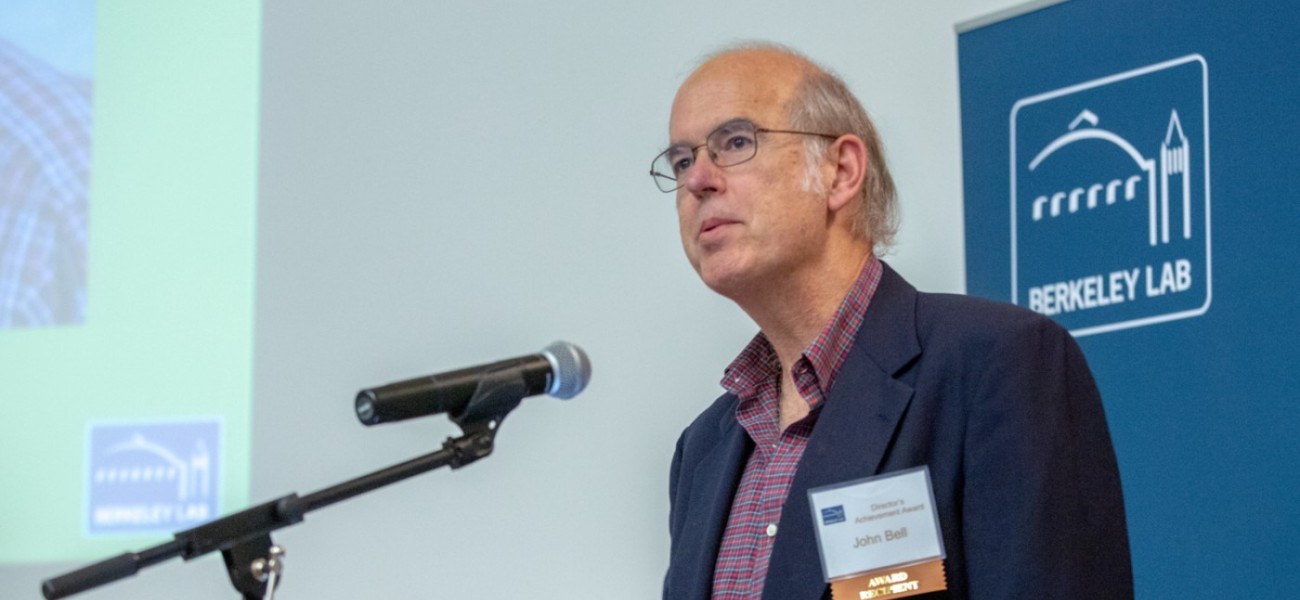
John Bell, a Berkeley Lab senior scientist, will deliver a special seminar on the science of hydrodynamic flows in celebration of NERSC's 50th anniversary. - Credit: Berkeley Lab
Fluid dynamics describes a wide range of phenomena, from supersonic aircraft and supernovae to the mixing of cream in a cup of coffee and the dripping of water from a leaky faucet. On Monday, September 16, at 1:30 p.m. PDT, join Berkeley Lab Senior Scientist John Bell for an exciting seminar on NERSC’s long history of supporting fluid dynamics research, with repercussions from that cup of coffee all the way out into space. Bell’s talk is available to the public via Zoom.
An important characteristic of many flows of both scientific and technological significance is that the fluid velocity is much smaller than the speed of sound in the fluid. For these types of flows, referred to as low Mach number flows, scientists can exploit the separation of scales between velocity and sound speed to develop models and algorithms that are much more efficient than methods based on a generic fluid formulation. In this talk, Bell will discuss the development of these types of models over the past four decades, elucidating how basic methodology for incompressible flow can be extended to low Mach number flows in atmospheric science, astrophysics, and combustion. He will present a number of numerical examples that illustrate the development of these types of models and demonstrate how advances in both algorithms and HPC architectures have enabled simulations that would have been unheard of 50 years ago.
John Bell is a senior scientist in the Applied Mathematics and Computational Research Division at Berkeley Lab. His research focuses on the development and analysis of numerical methods for partial differential equations arising in science and engineering. He has made contributions in the areas of finite volume methods, numerical methods for low Mach number flows, adaptive mesh refinement, stochastic differential equations, interface tracking, and parallel computing. He has also worked on the application of these numerical methods to problems from a broad range of fields, including combustion, shock physics, seismology, atmospheric flows, flow in porous media, mesoscale fluid modeling, and astrophysics. He is a fellow of the Society of Industrial and Applied Mathematics and a member of the National Academy of Sciences.
About NERSC and Berkeley Lab
The National Energy Research Scientific Computing Center (NERSC) is the mission computing facility for the U.S. Department of Energy Office of Science, the nation’s single largest supporter of basic research in the physical sciences.
Located at Lawrence Berkeley National Laboratory (Berkeley Lab), NERSC serves 11,000 scientists at national laboratories and universities researching a wide range of problems in climate, fusion energy, materials sciences, physics, chemistry, computational biology, and other disciplines. An average of 2,000 peer-reviewed science results a year rely on NERSC resources and expertise, which has also supported the work of seven Nobel Prize-winning scientists and teams.
NERSC is a U.S. Department of Energy Office of Science User Facility.
Media contact: Email our communications team ⟶